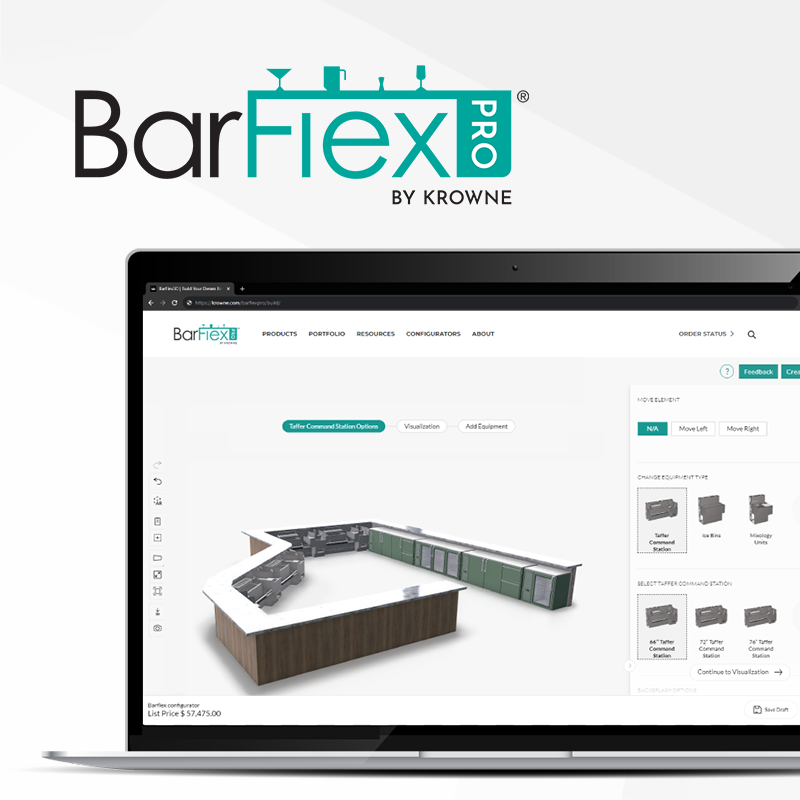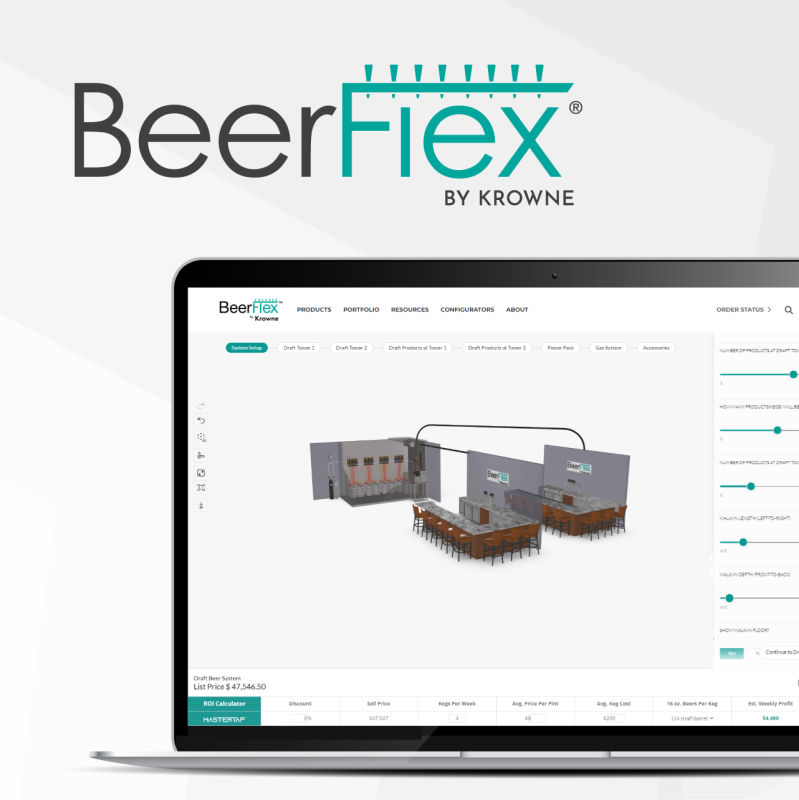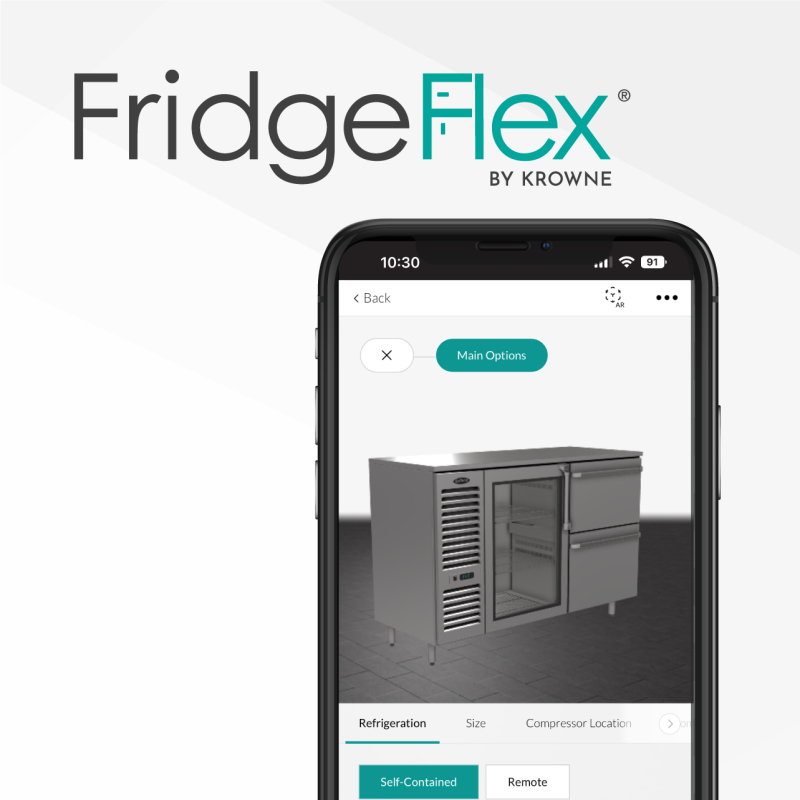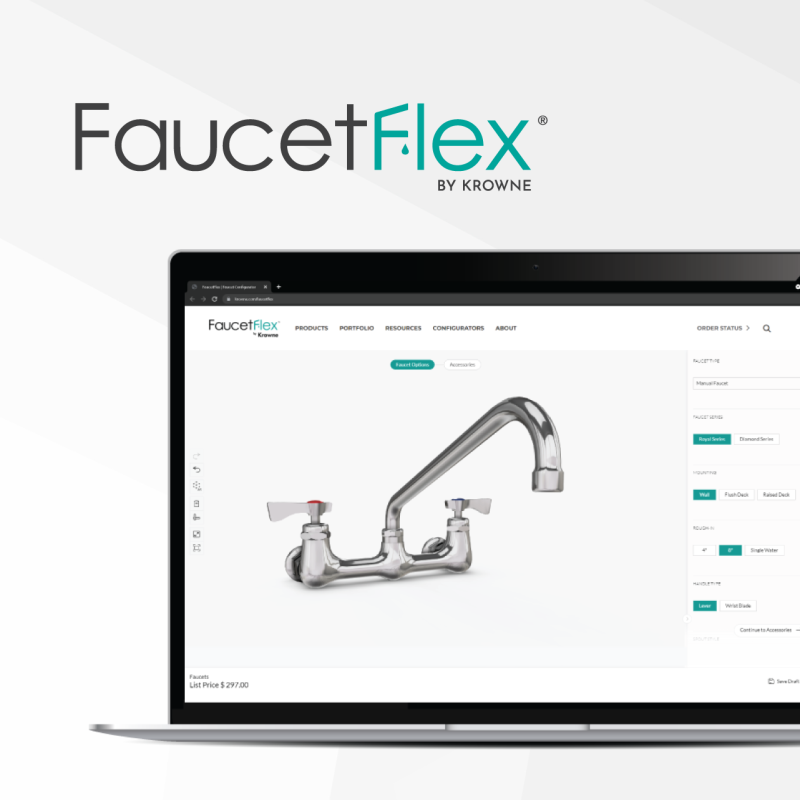An Interview with Lynnette Marrero
September 30, 2022 | Bar Ambassador Series
Next with our Bar Ambassador interview series is a conversation between Krowne’s marketing coordinator Allison Kane and Krowne Bar Ambassador Lynnette Marrero. Lynnette Marrero opened and is now the Bar Director at Brooklyn hotspot The Llama Inn and the newly opened Llama San. After shadowing Zacapa Rum Master Blender in Guatemala, she created her own company Drinksat6, cultivating a new generation of cocktail bartenders and elevating the bar at restaurants. Marrero launched the Masterclass.com Mixology platform in March 2020. Please enjoy Krowne’s conversation with Lynnette!
*Please note this conversation was recorded in October 2021
Allison Kane 0:00
Hi everyone, I'm here with one of our fabulous bar ambassadors, Lynnette Marrero.
All right, let's get started. The first thing I kind of wanted to talk with you about was how you ended up working in the hospitality industry. Was it something that you always wanted to do or something you just fell into?
Lynnette Marrero 0:19
It was something I fell into really because I was doing Broadway and performing and doing that. (I) never wanted to be a cliche, waiter-actor. I actually resisted being in hospitality for a long time until 9/11.
So, what I was doing prior to that, instead of being a waiter-actor was doing temp jobs, working in offices, etc. At that point, I was like, well, I'm never going into an office building again. So, I'm gonna have to figure out hospitality.
And so, I got a job at a wine bar on the Lower East Side and started working there. It was funny, Michael Turnhout, who's kind of a famous chef, he was also working there at the time. He was pursuing acting, and we're working in hospitality, but we both kind of came into this industry in quite a big way.
So just started working there and learning about global wine and really just kind of understanding hospitality. And I ended up really loving it (and) started working in bars like Martini lounges and moved into spirits and full cocktail programs.
And then really kind of through working at the Flutter and Lounge, which became a very big part of my career, was where I really fell in love with craft cocktails. And (I) really (began) building drinks in a way that was a very different and more theatrical and more complex.
That led me to restaurant bars, which I felt more at home working at Freeman's where we really had like that gastropubs sort of idea, but it was craft cocktails, fresh juice. And so, through that I started working and consulting on building bar programs.
Allison Kane 1:49
That's awesome. I didn't know that you were an actor. Not an actor-waiter. But at first, that's so interesting.
Lynnette Marrero 1:59
Yeah, I mean, it was definitely fun. And I loved it. But yeah, you know, different type of entertainment than working on bars.
Allison Kane 2:08
Oh definitely. The reason I mentioned (this) is I have a friend doing the same thing right now.
Lynnette Marrero 2:13
Oh, nice.
Allison Kane 2:13
So, I was like oh, I know this life.
Lynnette Marrero 2:14
Lots of my friends are still in it. I just yeah (can’t) do that national touring anymore.
Allison Kane 2:20
No that makes sense. It is a lot of commitment. When and where did you make your first drink then, either I guess-
Lynnette Marrero 2:28
That’s gonna be my first cocktail (on) menu or my first…
Allison Kane 2:31
Sure! Your first cocktail on the menu.
Lynnette Marrero 2:34
I don't think I had any cocktails on the menu at Flatiron because I kind of was just starting there. And that was my first official bartending gig. So really, it would be at Freeman's I had my first cocktail put on menu there.
Allison Kane 2:46
Do you remember what cocktail that was?
Lynnette Marrero 2:50
The Cusco Fizz.
Allison Kane 2:51
So, when you are designing a bar, what parts of the bar (do) you consider a must have. (Something) you can't live without.
Lynnette Marrero 2:58
I mean, for me, I think something that's always complicated is working with designers. They don't leave enough space for you to put your glassware. It's a chronic problem in the hospitality industry, where they just don't think about it.
And so, trying to control where you have that storage on your side, where you're building out. To make sure you have places to put the vessels that cocktails are going to go into is super important. So, I feel like it's the most forgotten thing.
It's the one thing that I look at most. I feel like I'm pretty adaptable to most other things. Whether it's, you know, depending on the space, whether people want to use a dip sink, or they want to use a sprayer to clean their tins, I'm very adaptable in those.
Just because, you know, working in New York, where space is always an issue, you have to think about what's going to fit the dynamic. And you know, sometimes you inherit very old spaces where there's not a lot of freedom to change. So, you had to get a bit creative and think of which method is going to work best for that process to streamline what's going to be happening.
Those are some of the things that are most important. Where I'm gonna put glasses that I'm putting things into and then where I'm going to wash my tins to keep moving.
Allison Kane 4:14
You know, that makes a lot of sense. Kind of going off of that then, what's the most nightmare bar situation, that you've found yourself in? Either, like, where you've been working the bar or just have seen…
Lynnette Marrero 4:26
Most nightmare(ish)? I mean there's tons of them. It's really hard to say what(’s) the worst one because it's usually whenever there's no access (to) running water. It's like (the) one place. It's usually something to do with not being able to wash efficiently your tools, which to me is the biggest nightmare because that's sanitary.
You're not properly dealing with your tins especially if you're using egg whites and all these things then you're going to have a big issue at the end (of) the day.
Allison Kane 5:02
And then on the flip side of that, what is the best bar layout that you've been able to work in?
Lynnette Marrero 5:08
I wish I could say it was the Diageo bar. But I think there was a lot of issues with that setup that I didn't like, with certain stuff. And that was using I won't say what brand (but) they use a certain station.
That gets a lot of good reviews. And I don't think it was set up (right) because I was very far away. I don't have long arms. You know, I'm a shorter person.
Allison Kane 5:31
And I'm also a shorter person.
Lynnette Marrero 5:33
I think that's another thing that people don't take into account how far (to reach). You know, a lot of my peers who (are) designing bars. They're like, “Yeah, I'm a, you know, a six-foot guy with long arm reach.”
I'm like, okay, yes, that works for you, but it's not gonna work for me. And now I'm like, I'm releve, dropping your cocktails onto the bar. So, I think that is something to think about.
Allison Kane 5:55
So then, kind of switch(ing) gears a little bit into the drinks that you have designed, personally. What do you think is the most challenging drink you(‘ve) designed? And why?
Lynnette Marrero 6:05
There's a lot of them. I mean, I try to think about streamlining them. I mean, I put a lot of Sous Vide and elements. So, it's mostly the prep, it's not necessarily on pickup.
Just because I've always worked in bars where there has to be a thought process to yes something can be complicated, but you have to get it to the guests in time. So, there's a lot of building the drinks, it's more I put a lot of my team (to work) in the advanced part.
So, it's more of like, okay, we have to Sous Vide these things. Get these batches together to group batch certain parts of the drink that are stable, so that way we can execute these in a timely manner for the guest. We have like a three step (program).
Carmel. Tamari, caramel, popcorn infused old fashioned Japanese whiskey on the Llama Inn menu, that might be the one that takes the most steps. But then I'm like, okay, we also have a milk punch, which also takes a lot of steps. So yeah, nothing on the pickup to the guests that they would know. But more on the bartender.
Allison Kane 7:04
Yeah, the caramel drink that you were mentioning. Like, that just sounds so good.
Lynnette Marrero 7:10
Yeah, it's, it's awesome.
Allison Kane 7:12
And then so you have done a lot of things in the bar industry, that I think are really cool. When I was kind of looking into your website. I know you just had the Speed Rack competition a few weeks ago, I think now,
Lynnette Marrero 7:25
Yeah, it was a month ago
Allison Kane 7:26
Yeah a month. Okay. Can you tell me a little bit about that competition, how you helped start it and kind of what it is?
Lynnette Marrero 7:37
Sure. It was started in 2011. We started it as an opportunity. Initially it started as where we saw there was a gap of women in the industry who were working in cocktail bars having opportunities presented to them.
So, we were like, well, there's this incredible talent pool, people seem to think that there are no women in craft. So, we wanted to create a cocktail competition that would highlight and promote those women, as well as raise money for charity. I was doing lots of charity events with an event group called LUPEC. Just “Ladies United for the Preservation of Endangered Cocktails.”
And that was kind of a big organization that was national, we were all different chapters, but we all decided to do cocktail events to raise money for women’s-based charity. So, with Speed Rack, we decided to put that element in there as well, just because, you know, there was so much opportunity to raise money through cocktails and bartending. We thought, if we're going to do something, we should impact our community and a larger level, not just with bartenders, so that was kind of really the starting point.
And we decided that focusing on a classic cocktail competition, where they were challenging the women competing to do what they do every Friday, Saturday night when they're cranking out, cocktails for 70 seats, but then cocktail luminaries come and sit at your bar.
And you're just like, oh, okay, I have to make four of the best cocktails ever. But I need to quickly put them down and then keep serving the rest of the team. So that's kind of where that came from.
Allison Kane 9:08
Yeah, it looks really, really cool. Because I've seen a bit, I was like, wow, I want to watch. So, and then I wanted to ask you kind of about trends for 2022. With both drinks and with bar designs, can you tell me a little bit about what you're seeing?
Lynnette Marrero 9:24
So, I mean, I think, you know, people are definitely…when guests come out. I think that's what we're all responding to is what guests like to see. I think guests were making cocktails at home (and) had plenty of time to kind of play around with you know, drinks and things like that.
So, they have like now a base level understanding of what it takes. So, I think now guests are more interested in things that will excite them and wow them as opposed to… Because there's just so much more, you know. There are things that they can't do at home and so they want to see those things. So, I feel like there's definitely more interest in more complex cocktails, flavors that are more unique, using spirits and liquors that they probably wouldn't have before. So, I think that's gonna help.
Allison Kane 10:10
Yeah. And kind of a lighter question, but what's your favorite drink to make? Either for yourself or for your guests?
Lynnette Marrero 10:17
Um, I mean, I love Martini variations. Those make me really happy. Whether it's, you know, 50-50s Gibson's, that kind of stuff. I personally love those drinks. (I) make a lot of Negroni’s. But, you know, for me, it really is, like, I love making any cocktail that's going to make someone happy.
So, there's no like, I just like this style, or this style. I really have a very broad spectrum. I make a lot of spritzes. I do a lot of kind of light and fresh filling that no and low. But I love flavor building and bringing culinary techniques into my cocktails. Because I think there's so much in there's so many opportunities (to) have more things in it.
Allison Kane 10:54
That's cool. I like that answer. And then kind of going back to designing. We have a program called BarFlex3D where you can kind of create your dream bar through the software and kind of switch things around as you want.
Have you been able to use that? And if you have, has it helped the way you designed bars?
Lynnette Marrero 11:11
I have not because I haven't designed a bar since really knowing about Krowne. So, I haven't used it. But I think it's a great concept.
I mean, I think it obviously makes a lot of sense. It's super useful. I think what sometimes hard for people to imagine, you know what it's like. So, I think that's helpful.
Allison Kane 11:31
And then kind of going off with those designing questions. When people start designing a bar, is there something you think that they need to know going in?
Lynnette Marrero 11:38
Well, no, I think they need to understand what program they want to execute. You know, I think a lot of people go in thinking they want to do this really complex craft cocktail, but then they don't build a bar that makes it happen.
So, I've gone in and done lots of retrofitting programs, and had to use a lot of other techniques to make it work. But if the space had been set up properly in the first place would have been a lot easier.
Allison Kane 12:01
Okay, that makes sense. And then I feel the other you know, big thing I've seen that you kind of accomplished within this, either this past year, these past two years, COVID has really been wonky on my timeline, is that you launched the first masterclass for mixology. Which is very cool. Can you tell me like a little bit more about that kind of how that came to be?
Lynnette Marrero 12:21
Really, it was just kind of… They found me, reached out to me, and we got on a phone call. Their recruiters, like, hey, what do you know, we want to see if you'd be interested in doing this class. We think you'd be great for it.
And then the process started, you know, really (the) creative director reached out after they met me and kind of vetted me. And then they reached out and said, what do you want to teach? What do you think? What do you think this first class that's in this area? What should that be?
And I just talked through a lot, and I really pulled from a lot of the things that I know. Which is like, you know, hey, I think people need to know the basics. Like they can't run if they have(n’t) been taught the steps to walk.
And so that was really my focus. How to kind of teach people, cocktail families, cocktail styles, and think about classics, but then give them alternatives to work with.
Whereas, my counterpart, Ryan, was doing more complex (drinks.) But the whole idea was to really come together and build a class where people can discover their own cocktail voice and (in) kind of a lot of ways (it’s the same as how) I train my bar teams, which is okay, here's the basics.
Here's the understanding. Now, let's play around have fun, once we understand the rules, then we can break the rules.
Allison Kane 13:33
Yeah, no, that sounds, it's just sounds really cool. I've watched the preview for it. And I'm like, I should take this because I want to get better. So why did you want to partner with Krowne?
Lynnette Marrero 13:43
I really thought it was interesting to bring bartenders into the conversation of design. You know, that's been something where I think (it’s not) something I've seen in my career. Choices are picked, and machinery and things are built without sometimes the thought process of talking to the people who create them. So Krowne reaching out and asking for me to be a part of it, to have an understanding of it, and to help contribute to the betterment of these products I think that's really valuable and important.
And, you know, I love it. There's a whole collective of people working in this space who have different skill sets. You know, Leo’s really brilliant at design and lots of people who…it's good, because I think a collective mind brings together lots of different experiences from other places. How people work differently, and that definitely adds to the (experience.) So, I like the group approach. There's a lot of advisors from the community involved, and that's going to make it a stronger product.
Allison Kane 14:44
Yeah. What kind of drink do you think matches your personality?
Lynnette Marrero 14:49
Oh, um, okay. Probably a champagne cocktail, like 75. Kind of palatable, really fun. Yeah, you know, I'd like to make sure things are festive and bright and fun.
Allison Kane 15:04
No, I love it. And then last one, if you could only make one drink for the rest of your life, what drink would that be?
Lynnette Marrero 15:11
It (would) probably be a Negroni and all of its variations because I feel like if I just have sweet vermouth and Campari, I can probably make a ton of drinks and riffs based on that. So that's an efficient mindset.
Allison Kane 15:23
Yeah, you're quick with that one.
Lynnette Marrero 15:26
It got me through quarantine. And I was like, you know, Negroni and all their riffs (were) pretty much the heart of my quarantine.
Allison Kane 15:33
Nice. I like that. So, if anyone wanted to find out more about you, where can they go?
Lynnette Marrero 15:39
They can find me on Instagram at Drinks at Six (@drinksat6). I'm the bar director for llama Inn and Mana Sun. So, if you want to kind of have an understanding of what my programs are like, you can pop by those restaurants and try the cocktails there. Yeah, or you'll just find me at a Speed Rack around the country doing things.
Allison Kane 15:59
Alright. So, thank you so much for your time today.
Topics: Bar Ambassadors, Bad Birdy, Bartending, Bartender





